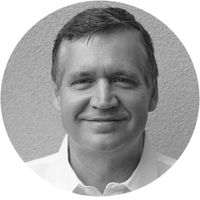This is how we're going to land a spaceship on a freaking comet
Imagine pushing a beer fridge out of a treehouse and onto a dirty potato the size of Mt. Fuji — that's moving at 33,000 mph


Sunday is the 45th anniversary of the moon landing, and the hype is in full swing. You might even be tempted to think mankind's never done anything remotely comparable, or even important or valuable, since that day in '69 when we fired up a rocket and put a real human man person on the damn moon.
But consider this: Later this year, we're going to land a spaceship on a moving comet.
No people, sure. Oxygen not an issue; granted. But you've gotta admit, in terms of the tech, this is beyond a new degree of difficulty. Comets whip around the solar system much much faster than bullets, and they spew gases, and tumble and spin, and crumble into dust and steam, and they're teeny-tiny, really, compared to the big old, fat, lazy, choose-any-flat-dry-landing-spot-you-like moon.
The Week
Escape your echo chamber. Get the facts behind the news, plus analysis from multiple perspectives.

Sign up for The Week's Free Newsletters
From our morning news briefing to a weekly Good News Newsletter, get the best of The Week delivered directly to your inbox.
From our morning news briefing to a weekly Good News Newsletter, get the best of The Week delivered directly to your inbox.
This Bruce Willis movie is really happening, right now, 360 million miles from Earth. Way out in the Sagittarius constellation, a spaceship from Earth and a comet from the dawn of the solar system are closing in for an intimate tango.
This dance has been ten years in the making. Way back in March 2004, the European Space Agency launched the Rosetta spacecraft. Its mission: to attempt our solar system's ultimate crack-the-whip thrill ride, hooking onto a tail-spewing comet and sling-shotting with it around the sun at up to 100 miles per second.
But it's more than a thrill ride. Comets zoom around in the freezer-pop vacuum of space, essentially unchanged, sometimes for billions of years. They contain valuable information about the early universe that's uncontaminated by smog, or weathering, or French fry grease.
Our target comet is a rocky little fella named 67P/Churyumov-Gerasimenko. Imagine a dirty potato as tall as Mount Fuji. (Like most comets, 67P doesn't have enough mass to pull itself together into a sphere.) It's presumed to be mostly made of the usual stuff, including various kinds of ice and what might loosely be called dirt, though of course finding out its exact ingredients is half the fun.
A free daily email with the biggest news stories of the day – and the best features from TheWeek.com
67P orbits the sun every six and a half Earth years, and as it approaches the sun, it speeds up and warms up, releasing an 800-mile-long trail of dust that looks white or yellow to us and follows in its orbital path, and a second, bluish "ion trail" of gas, that always points away from the sun because it's affected strongly by the solar wind.
But how do you catch a comet? 67P is whipping along at a blistering 33,000 mph, and it's only going to get faster as it approaches the Sun. To work up enough speed to catch 67P before things heat up, Rosetta has used a series of gravitational slingshots: three loops around Earth and one around Mars, using each planet's gravity to build velocity. The closer the sling-shotting object dares approach the planet, the faster its exit velocity; on one Earth flyby, Rosetta came close enough to the surface to be seen by amateur astronomers.
After this nausea-inducing loop-de-loop through the solar system, Rosetta flew off on its final trajectory, and was essentially shut down, except for the space heater keeping it from the frostbite absolute zero of space, to conserve fuel for the mission to come. On January 14 of this year, Rosetta was successfully awakened after nearly 1,000 days shivering in hibernation, and is now firing a series of burns to bring it close; on or about August 6 it's scheduled to go into orbit around 67P.
And that's when the fun begins!
The Rosetta probe, minus its 46 feet of unfolded solar-panel dragonfly wings, is around 9 feet by 7 feet by 6.5 feet. Its lander, Philea, is much smaller — just a 3-foot by 3-foot by 3-foot cube. So landing this probe on the surface, from orbit, is a little like pushing a college beer fridge out of a slowly orbiting treehouse about six-tenths of a mile above the ground.
But don't worry: Earth's metaphorical beers are in no danger of smashing on impact.
Gravity is a laughably weak force: Earth is a six-thousand-trillion-ton ball of rock and molten iron, yet any four-year-old can separate herself from it by hopping like a bunny. A relative pipsqueak the size of one Earth mountain, 67P causes only the slightest perturbation in the local gravitational field. The beer-fridge lander weighed 220 pounds back on Earth, but out here will weigh more like a single bottlecap.
In fact, Philea can't rely on 67P's gravity to draw it in. It isn't so much landing on the comet as it is being fired at it, on a slow marshmallow-gun trajectory, and when it reaches the comet the lander will fire harpoons to anchor itself to the surface so it doesn't bounce off into space like the world's most expensive basketball.
This November, we'll push that beer fridge out the treehouse door. Whether or not the lander touches down safely, Rosetta will continue to orbit, pirouetting with its partner in a dance around the sun, reaching "perihelion" (the closest point to the sun) on Aug. 23 of next year, and running all kinds of valuable tests.
If all goes well Rosetta should remain locked with its partner, looping around the sun every 6.5 years as Earth civilizations rise and fall. Hopefully Philea will be there too, harpooned to the rocky surface, an unexpected treasure to delight future beeping and blinking drone archaeologists.
One small step for a beer fridge…One giant leap for the unmanned probes of mankind.
Keith Blanchard is CEO of Teamstream Productions, a next-gen content production house dedicated to assembling the exact team you need to conquer any publishing objectives. In previous media lives he was chief creative officer of Story Worldwide, ran digital for Rolling Stone, launched websites for Us Weekly and Cosmopolitan, and was editor-in-chief of Maxim magazine. Generally speaking, though, he would rather be fishing.


